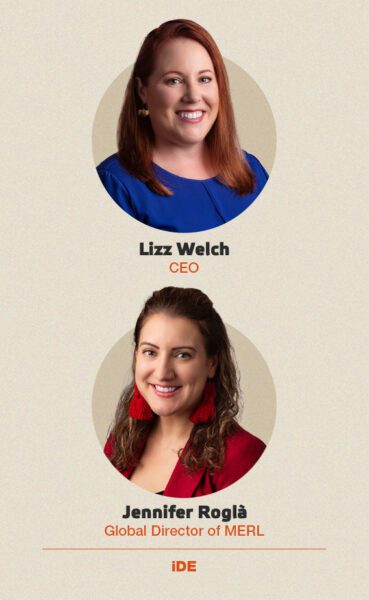Experiential Learning for Sustainable Development
Ignite India’s tailored, place-based approach
Is there a lesson for entrepreneurs in the recent DoorDash offering?

In early February, DoorDash announced a partnership with Parafin Capital to offer Revenue-Based Financing to restaurants. Using data from their delivery company, and algorithms designed by Parafin, DoorDash is just one of the latest companies to jump into the revenue-based financing space. They offer short-term loans for small business owners, hoping to catalyze the next stage of growth.
Investopedia defines Revenue-Based Financing funding, “also known as royalty-based financing, [as] a method of raising capital for a business from investors who receive a percentage of the enterprise’s ongoing gross revenues in exchange for the money they invested.”
For over a decade, iterations of Revenue-Based Financing (RBF) have offered a practical solution. Many types of businesses can’t qualify for bank loans and may not have a business model to offer the outsized growth and related exits that attract angel or venture investors. RBF answers this need.
Many types of businesses can’t qualify for bank loans and may not have a business model to offer the outsized growth and related exits that attract angel or venture investors. RBF answers this need.
Until recently, however, this type of financing was little known and more difficult to find.

Frank Golbeck, founder of Golden Coast Mead
Frank Golbeck, founder of Golden Coast Mead, might have been interested in the DoorDash offer if it’d been available back in 2013. Having exhausted other funding options, like banks or angel investors interested in equity investment, Golbeck networked himself into a Slow Money Gathering in Northern California. There he found a mentor experienced in finance and interested in spreading the word about RBF finance structure. Golbeck used the royalty note for his first and several subsequent raises to grow his San Diego-based meadery. It seemed like an ideal opportunity.
With a royalty note, Golbeck avoided the burdens of a loan with fixed payments and a pre-determined payment schedule that makes it difficult for a young and growing business to find profitability. Instead, payments, after a suitable grace period, would be made in accordance with the revenue he brought in. Unlike venture capital or angel funds, this happens with payments over time instead of a liquidity event like a sale (also known as an exit) to a larger company.
Golbeck’s interests for growing Golden Coast Mead and staying in control to serve his mission were a good fit for the revenue-based finance structure. The structure also served investors’ interest in supporting social enterprise, while getting back their investment in a structured exit. Entrepreneur and investor needs align in the innovative finance structure.
Entrepreneur and investor needs align in the innovative finance structure.
Looking back at the experience, Golbeck applauds the royalty note structure with its flexible payment schedule. He does, however, suggest one improvement in the royalty note terms he used. He believes he would be better served by tying the flexible repayments to free cash flow or gross profit, instead of gross revenue. He says, “We structured it [the royalty note] as a percentage of revenue. I think what would be more appropriate would be a structure based on a percentage of profit or preferred return.” He notes, “a growing business can use money in a lot of different ways. If there’s a gap in alignment between the investor and the entrepreneur, that gap will be clear when repayment takes priority over other needs or opportunities.”
 Keith Harrington would agree with Golbeck and the lessons he’s learned. Harrington is the founder of revenue-based financing firm, Novel Capital, and the lead for the RBF practitioner’s group, Revenue-Based Financing Network.
Keith Harrington would agree with Golbeck and the lessons he’s learned. Harrington is the founder of revenue-based financing firm, Novel Capital, and the lead for the RBF practitioner’s group, Revenue-Based Financing Network.
Building from a career in venture capital, Harrington discovered the RBF structure in 2017. Today, Harrington remains excited by the opportunities available with the RBF structure. Harrington says, back in 2017, after considerable research, he became “pretty convinced that [RBF] was a great tool to help more and more entrepreneurs. And I remain convinced of that today, five years later.”
But Harrington shares some wisdom about the finance structure as well.
Though he is conditionally excited about new funding entrants like DoorDash, Harrington realizes the need for even greater responsibility by funders and entrepreneurs in this growing funding landscape. Entrepreneurs need to get more educated and really tune into their business models before leaping into the nearest offer. Harrington says, “It’s certainly incumbent upon the capital provider to size the deal correctly. But at the end of the day, the entrepreneur needs to spend some time making sure that they’re taking money that they can repay…in the time frame that is expected from that provider.”
With new entrants every day, there is a lot for an entrepreneur to consider.
Financial innovators Janice Shade and Aunnie Patten Power may have an answer.
While doing research on this fundamental problem of fit, Shade discovered an Oxford course on innovative finance where she met Professor Patten Power, author of the recent book, Adventure Finance.
Today, they’ve combined forces to develop a database that will make the various investment term components searchable. Shade says the database will offer “all the different ways you can structure private investment deals, from debt to equity and things in between, that you might never have known existed. And then add a searchable function so you can input a few questions to bring up the deal structures that might be best for you.”

The questions Shade proposes for her database look very much like the questions Harrington asks entrepreneurs to consider in his face-to-face meetings. These questions might include:
These are questions that might have benefited Golbeck back in 2013, if he’d known their relevance for the funding he considered.
These are simple questions an entrepreneur can use to interrogate their business model as they consider the funding terms available to them. Whether it’s the new DoorDash Capital fund, or one of any other new offerings now available.
There are an increasing number of choices impact entrepreneurs have for finding capital. The number of choices demands that they deeply consider the best fit for funding their missions and business needs.
Related Content
Comments
Deep Dives
RECENT
Editor's Picks
Webinars

Featuring
Lizz Welch & Jennifer Roglà
iDE
May 16 - 12:00 PM EST
News & Events
Subscribe to our newsletter to receive updates about new Magazine content and upcoming webinars, deep dives, and events.
Become a Premium Member to access the full library of webinars and deep dives, exclusive membership portal, member directory, message board, and curated live chats.
0 Comments